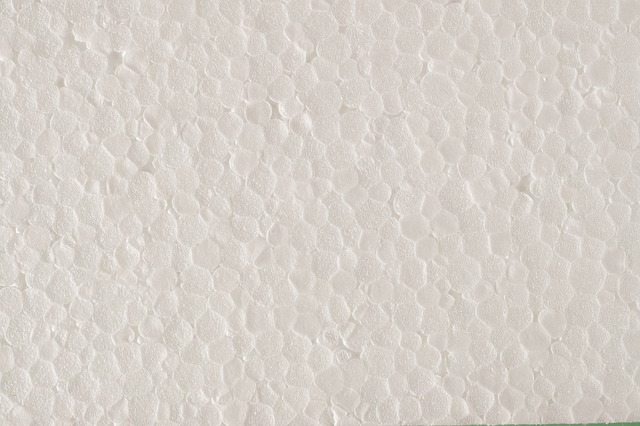Polystyrene
Polystyrene is made by stringing together, or polymerising, styrene, a building-block chemical used in the manufacture of many products. Natural styrene occurs in small amounts in foods such as strawberries, cinnamon, coffee, peanuts and beef.
Synthetic styrene, which comprises most of the global styrene, is made from ethylbenzene, which is a monocyclic aromatic hydrocarbon, it is a key product in the petrochemical industry as it produces styrene, used in plastic manufacture, particularly to produce polystyrene.
Other forms of polystyrene are expanded polystyrene (EPS) and extruded polystyrene, which are used extensively in insulation and previously packaging products because buy volume it can be over % air. To produce EPS a blowing agent (also called pneumatogens) is applied to the liquid material, to create a cellular structure, increasing thermal and acoustic insulation, as well as its stiffness whilst reducing density. These blowing agents work in a variety of ways, essentially mechanically, physically, chemically or in combination, some blowing agents have been banned, such as CFCs leading to other approaches, today Pentane is a common blowing agent used in the production of EPS.
To improve its performance in fire flame retardants maybe added, one common one is Hexabromocyclododecane (HBCD) promotes increased fire resistance, particularly in EPS. In the early 2000's HBCD was added to the Stockholm Convention list of on Persistent Organic Pollutants, which started with 12, known as the dirty dozen, later expanded to a little over 20.
Importantly although polystyrene can be classified as either a thermoset plastic or a thermoplastic, EPS and XPS are classified as thermoplastics, meaning they can in theory be melted down and recycled so long as any site contamination and collection issues are overcome.
Polystyrene is a versatile plastic that is used in a number of different forms to make a wide variety of consumer products:
- As a hard, solid plastic, it is often used in products that require transparency, such as food packaging and in many products related to medicine and laboratories.
- When combined with colourants, additives or other plastics, polystyrene is used to make appliances, electronics, automobile parts, toys, gardening pots and equipment, and so on.
- When made into a foam material, called expanded polystyrene (EPS) or extruded polystyrene (XPS), it is valued for its insulating and cushioning properties. Foam polystyrene can be more than 95% air and is widely used to make home and appliance insulation, lightweight protective packaging, surfboards, food service and food packaging, automobile parts, roadway and roadbank stabilisation systems, and so on.
[edit] Related articles on Designing Buildings
Featured articles and news
Government consultations for the summer of 2025
A year of Labour, past and present consultations on the environment, the built environment, training and tax.
CMA competitiveness probe of major housing developers
100 million affordable housing contributions committed with further consultation published.
Homes England supports Greencore Homes
42 new build affordable sustainable homes in Oxfordshire.
Zero carbon social housing: unlocking brownfield potential
Seven ZEDpod strategies for brownfield housing success.
CIOB report; a blueprint for SDGs and the built environment
Pairing the Sustainable Development Goals with projects.
Types, tests, standards and fires relating to external cladding
Brief descriptions with an extensive list of fires for review.
Latest Build UK Building Safety Regime explainer published
Key elements in one short, now updated document.
UKGBC launch the UK Climate Resilience Roadmap
First guidance of its kind on direct climate impacts for the built environment and how it can adapt.
CLC Health, Safety and Wellbeing Strategy 2025
Launched by the Minister for Industry to look at fatalities on site, improving mental health and other issues.
One of the most impressive Victorian architects. Book review.
Common Assessment Standard now with building safety
New CAS update now includes mandatory building safety questions.
RTPI leader to become new CIOB Chief Executive Officer
Dr Victoria Hills MRTPI, FICE to take over after Caroline Gumble’s departure.
Social and affordable housing, a long term plan for delivery
The “Delivering a Decade of Renewal for Social and Affordable Housing” strategy sets out future path.
A change to adoptive architecture
Effects of global weather warming on architectural detailing, material choice and human interaction.
The proposed publicly owned and backed subsidiary of Homes England, to facilitate new homes.
How big is the problem and what can we do to mitigate the effects?
Overheating guidance and tools for building designers
A number of cool guides to help with the heat.
The UK's Modern Industrial Strategy: A 10 year plan
Previous consultation criticism, current key elements and general support with some persisting reservations.
Building Safety Regulator reforms
New roles, new staff and a new fast track service pave the way for a single construction regulator.

























